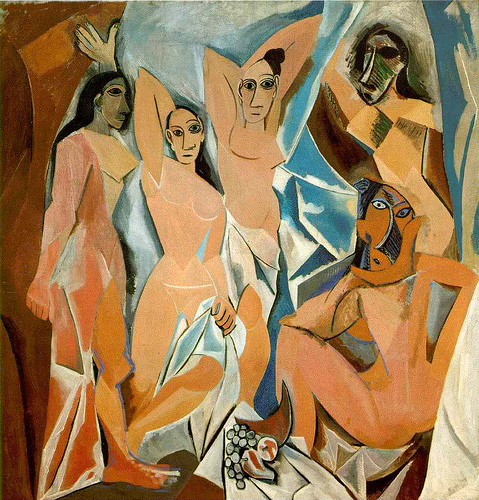TYPE DESIGN INFORMATION PAGE last updated on Mon May 5 19:54:12 EDT 2025
FONT RECOGNITION VIA FONT MOOSE
|
|
|
|
Cubism
From the wiki: Cubism was a 20th century avant-garde art movement, pioneered by Pablo Picasso and Georges Braque, that revolutionized European painting and sculpture, and inspired related movements in music and literature. The first branch of cubism, known as Analytic Cubism, was both radical and influential as a short but highly significant art movement between 1907 and 1911 in France. In its second phase, Synthetic Cubism, the movement spread and remained vital until around 1919, when the Surrealist movement gained popularity. [...] In cubist artworks, objects are broken up, analyzed, and re-assembled in an abstracted instead of depicting objects from one viewpoint, the artist depicts the subject from a multitude of viewpoints to represent the subject in a greater context. Often the surfaces intersect at seemingly random angles, removing a coherent sense of depth. The background and object planes interpenetrate one another to create the shallow ambiguous space, one of cubism's distinct characteristics. There is no specific typographic component in cubism, except that some, like Preissig, tried to create the angular types that evoke letters that were broken up and somehow put back together. In recent times, some have taken inspiration from cubist paintings in the selection of shapes of glyph outlines, and called their typefaces "cubist". |
EXTERNAL LINKS |
| | |

file name: Pablo Picasso Les Demoiselles D' Avignon 1907
| | |
|
Luc Devroye ⦿ School of Computer Science ⦿ McGill University Montreal, Canada H3A 2K6 ⦿ lucdevroye@gmail.com ⦿ https://luc.devroye.org ⦿ https://luc.devroye.org/fonts.html |
